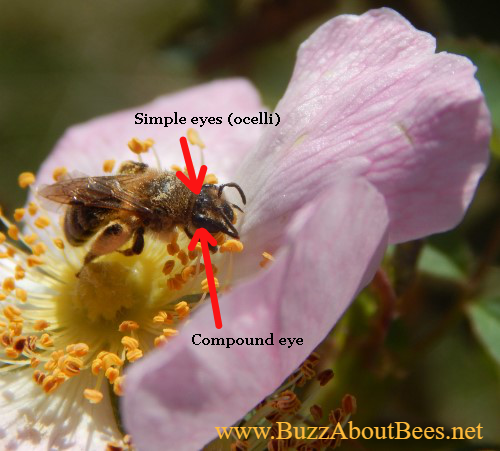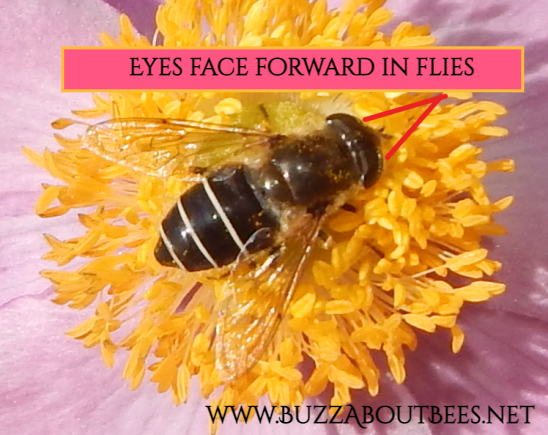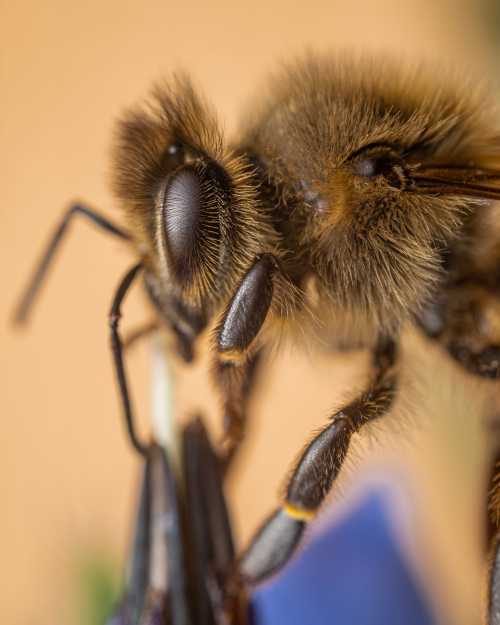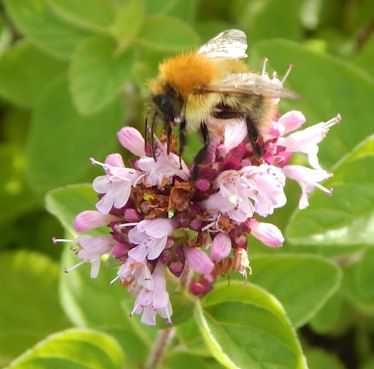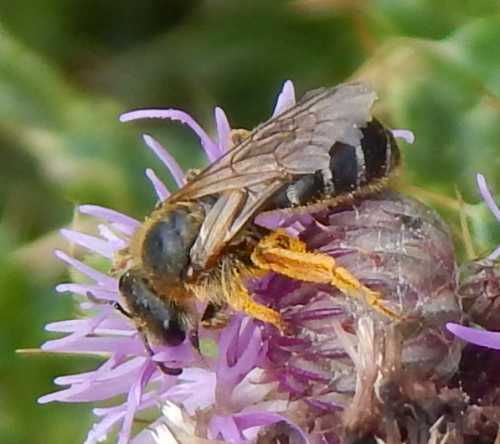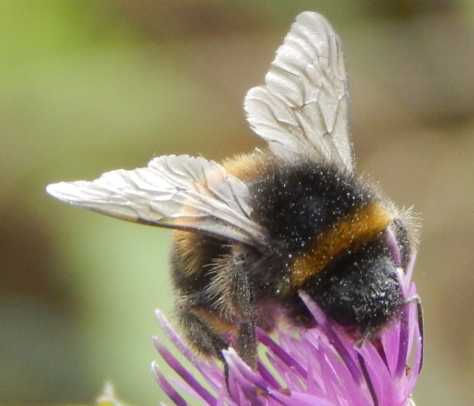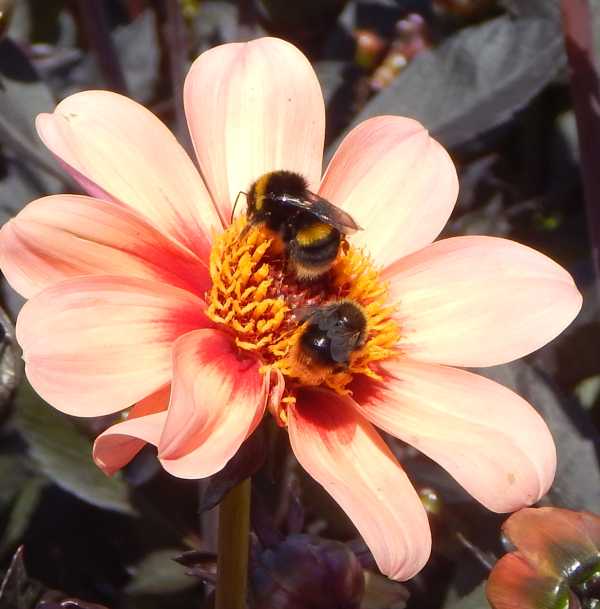Why Do Bees Have 5 Eyes?
Updated: February 2025
If you ever wondered how many eyes bees have, you will no doubt have discovered that they have 5 eyes. Naturally, this begs the question, 'why do bees have 5 eyes?'
The short answer is:
Bees have two sets of eyes, and each set is adapted to perform different tasks simultaneously:
- Detecting colors and UV markings in flowers, as well as flower shapes.
This task is performed by the two large eyes at the side of the head (known as 'compound eyes'). - Navigation.
The three small eyes on the top of the head (known as the 'ocelli') are important for navigation and orientation.
More information below.
About the 5 eyes of bees
Bees are not alone in the insect world for having 5 eyes, and specifically for having 3 ocelli on the top of the head: dragonflies, hornets, wasps, and grasshoppers also have them, among others.
What are compound eyes?
In bees, each compound eye is located at the side of the head (in contrast with true flies, for example, which have the eyes facing toward the front).
Each eye comprises thousands of individual lenses. They pick up the immediate environment, color and shapes.
These eyes enable bees to see UV markers in the flowers that guide the bee onto the 'landing platform' of the flower, and to the nectar reward.
Each tiny lens of the compound eye perceives the surroundings from a very slightly different angle. The sum total of these images recorded by the many lenses, provide the overall picture of the bee's surroundings.
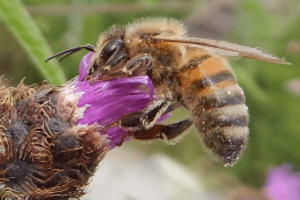 Above: The compound eyes are clearly visible at the sides of the head.
Above: The compound eyes are clearly visible at the sides of the head.It should be noted than in flies, the eyes are at the front of the head.
What are the ocelli for?
These small eyes are less conspicuous than the compound eyes, and are arranged in a triangle on the top of the head between the compound eyes. If you look very carefully at the image above, you can just make out at least one of the ocelli (the one at the front - it looks like a shiny round black dot).
The ocelli are also called 'simple eyes', because each eye has just one lens, but with many sensory cells.
These simple eyes do not form an image of their immediate environment as the compound eyes do. They are used by bees for orientation and navigation according to the position of the sun.
Interestingly, bees that fly at dusk or dawn have larger ocelli in order that they can pick up on the reduced sunlight when the sun is low in the sky. You can read more about this on my page do bees fly at night.
5 Interesting facts about bee vision
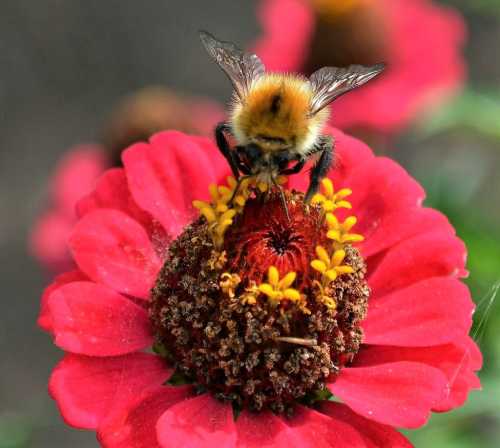 Above: Bees may not pick up on red hues, but may still visit red flowers. It is believed that bees can see ultra-violet markings in the petal that indicate rewards for the bee!
Above: Bees may not pick up on red hues, but may still visit red flowers. It is believed that bees can see ultra-violet markings in the petal that indicate rewards for the bee!1. Bees process images 15 times more quickly than humans do. This means, for example, that what might appear to be an even fluorescent light to us may well appear as a flickering light to a bee. See more facts about bees.
2. Black is not the only eye color for bees. There are bees with different colored eyes - even blue, such as the digger bee - Melissodes stearnsi and the Xylocopa tabaniformis parkinsoniae.
Some bees even have large, green eyes. This can be seen on a number of species such as some Anthophora, Xylocopa (larger carpenter bees), Halictid species among others.
Below is a Megachilid - this silvery leafcutter bee male below has pale green eyes:
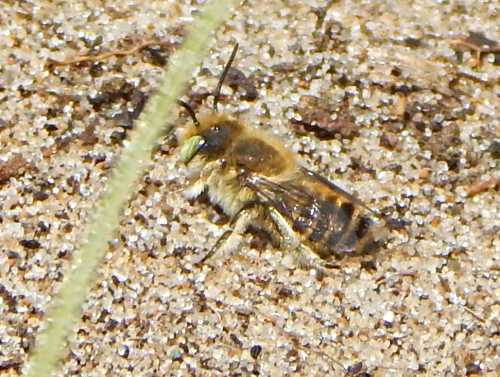 Above: The eyes of the male silvery leafcutter bee are an interesting shade of pale green.
Above: The eyes of the male silvery leafcutter bee are an interesting shade of pale green.3. Bees can recognize most colors perceived by humans, but they do not distinguish red very well. However, they may visit red flowers because they are able to perceive the ultra-violet markings inside the flower that we humans cannot see. Bee eyes are most attuned to see green, blue, and ultra-violet light.
4. Some bee species have eyes that are specially adapted to enable them to forage in reduced light, as stated above.
5. Honey bees have hairy eyes!
Not all bee species species have hairy eyes, but honey bees do.
A study by Georgia Tech found that the honey bee can carry up to 30 percent of its body weight in pollen because of the very clever use of hairs covering the entire body (in various densities) - including the eyes! The scientists observed that honey bees were able to groom 15,000 particles of pollen in 3 minutes1!
References
1. Guillermo J Amador, Marguerite Matherne, D’Andre Waller, Megha Mathews, Stanislav N Gorb, David L Hu. Honey bee hairs and pollenkitt are essential for pollen capture and removal. Bioinspiration & Biomimetics, 2017; 12 (2): 026015 DOI: 10.1088/1748-3190/aa5c6e
If you found this page helpful or interesting, I'd really be grateful if you would share it with others - if not this page, perhaps another, such as Gardening For Bees.
Thank you so much :) .
